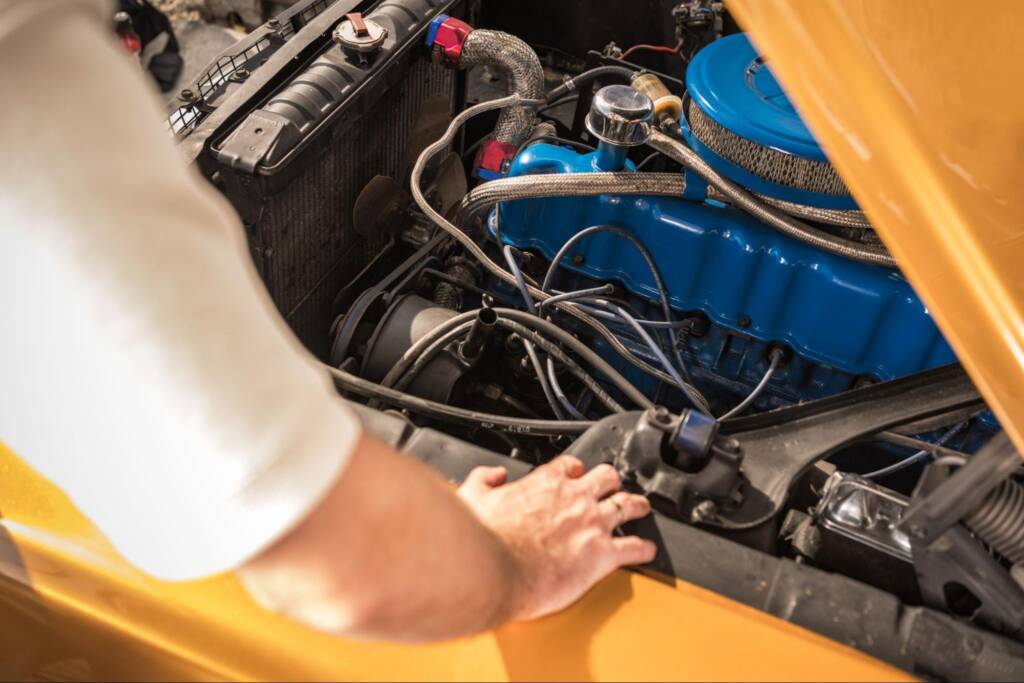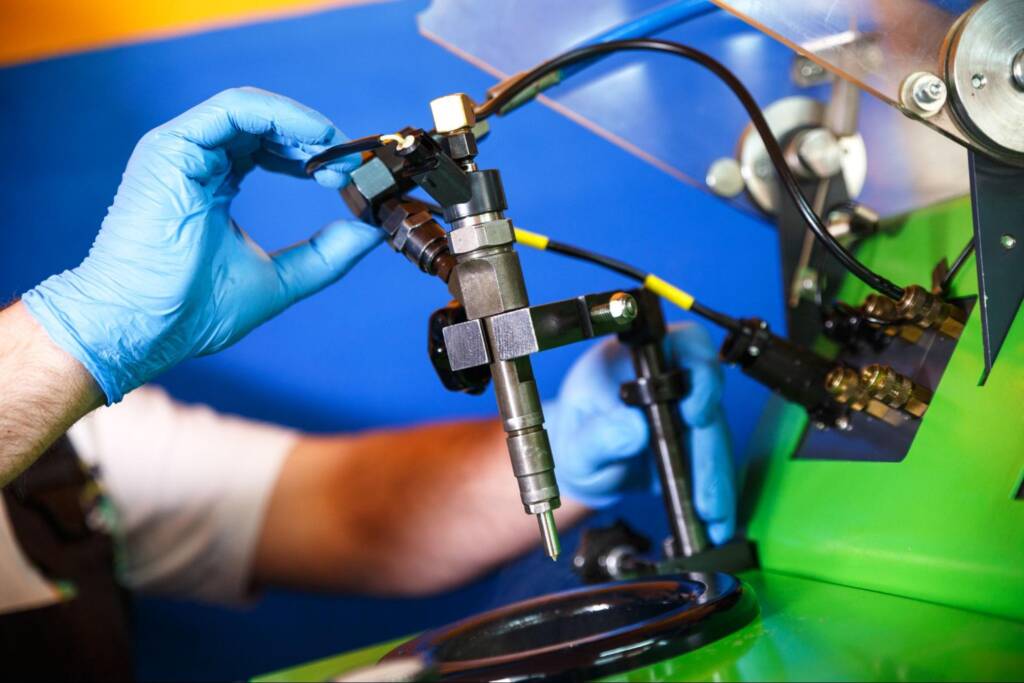Two systems stand out regarding how your car’s engine gets its fuel: carburetors and fuel injection. Both have powered vehicles for decades but function in very different ways. Each system has its own set of strengths and weaknesses, influencing performance, fuel efficiency, and maintenance. For car enthusiasts, mechanics, or everyday drivers, understanding the difference can shape how you maintain or even upgrade your vehicle. Choosing the right system could mean better performance, improved fuel economy, or easier maintenance.
Carburetor vs. Fuel Injection: Understanding the Basics
Both carburetors and fuel injection systems serve the same essential purpose—mixing air and fuel to power the engine. However, the technology behind them is fundamentally different. Carburetors rely on a more mechanical process, while fuel injection uses precise electronic control. Grasping the basic workings of each helps to understand why modern vehicles have primarily transitioned from carburetors to fuel injection.
What is a Carburetor?
A carburetor is a mechanical device that blends air and fuel before sending it into the engine. It uses air pressure and vacuum forces to draw fuel into the air stream, creating the perfect mix for combustion. This technology was once the standard in most cars, dominating the automotive industry until the late 20th century. Carburetors are relatively simple and can be adjusted manually, which appeals to DIY mechanics and vintage car lovers. Despite being outdated in modern cars, they remain popular among classic car enthusiasts and those who prefer a hands-on approach to vehicle tuning.
What is Fuel Injection?
Fuel injection is a more modern method of delivering fuel directly into the engine’s combustion chamber. It uses electronically controlled injectors that spray precise amounts of fuel based on sensor feedback. This system replaced carburetors in the 1980s, offering better fuel efficiency and improved emissions control. Modern cars mostly use electronic fuel injection (EFI), which adjusts fuel delivery automatically for optimal performance. With sensors monitoring air intake, engine temperature, and throttle position, fuel injection provides a more accurate and responsive fuel delivery system.
Carburetor vs. Fuel Injection: Key Differences
While both systems perform the same essential function, they do so in fundamentally different ways. These differences affect everything from fuel economy to engine responsiveness. Understanding how each system works can help drivers make informed decisions about maintenance, upgrades, or even buying a new vehicle. Knowing each system’s pros and cons allows drivers to align their choices with their specific needs and preferences:
Fuel Delivery Method
Carburetors deliver fuel by relying on air pressure. As air flows through the carburetor, the venturi effect draws in fuel from a small jet. This process works well but lacks precision. In contrast, fuel injectors spray a fine mist directly into the engine’s combustion chamber. The electronic control unit (ECU) manages the timing and amount of fuel injected, ensuring maximum efficiency. This direct injection method allows for better control over the air-fuel mixture, resulting in smoother engine operation.
Performance and Efficiency
Fuel injection systems generally offer better fuel efficiency than carburetors. They deliver fuel more precisely, reducing waste and optimizing combustion. This precision also improves engine performance, especially at higher speeds or under heavy loads. Carburetors, while capable, struggle to match the consistency of fuel injection systems. Additionally, fuel-injected engines handle cold starts more effectively, making them more reliable in colder climates.
Maintenance and Repairs
Carburetors are known for their simplicity and ease of maintenance. Cleaning, adjusting, or rebuilding a carburetor can often be done with essential tools and mechanical knowledge. Fuel injection systems, however, are more complex and usually require professional diagnostics and specialized equipment for repairs. Although modern fuel injectors need less frequent maintenance, when they do malfunction, repairs can be costly. In the long run, though, fuel injection systems tend to be more durable and require fewer tune-ups.

Carburetor vs. Fuel Injection: In-Depth Technical Breakdown
Understanding the technical mechanics of carburetors and fuel injection systems can reveal why they perform differently. Both systems mix air and fuel for combustion but use entirely different mechanisms. This section explores how each system operates, from fuel delivery to how components work together. A deeper dive into their functions sheds light on why fuel injection has become the standard in modern vehicles:
How Carburetors Function Mechanically
Carburetors operate using the principles of air pressure and vacuum. When air enters the carburetor, it passes through a narrowed tube called a venturi, which increases airflow speed and reduces pressure. It creates a vacuum that draws fuel from the float chamber through jets, mixing it with air to form a combustible vapor. Components like the throttle valve and choke help control air intake and fuel mixture, ensuring proper combustion during startup or acceleration. The system relies heavily on manual tuning and adjustments, offering drivers hands-on control over fuel delivery.
How Fuel Injection Delivers Precision
Fuel injection systems use electronic sensors and an engine control unit (ECU) to regulate fuel delivery. The ECU gathers real-time data from sensors that monitor air intake, throttle position, engine temperature, and oxygen levels. Based on this information, it sends signals to injectors that spray fuel directly into the combustion chamber or intake manifold. This function ensures that the air-fuel mixture is optimized for performance, efficiency, and emissions control. The precise control allows for quicker throttle response, better fuel economy, and smoother engine operation.
Components of a Carburetor System
A typical carburetor system contains several essential parts: the float chamber, throttle valve, choke, and jets. The float chamber constantly maintains fuel, allowing the jets to draw fuel consistently. The throttle valve controls airflow and adjusts engine speed when the accelerator is pressed. The choke restricts airflow during cold starts, enriching the fuel mixture for easier ignition. Jets control the fuel entering the airflow, ensuring the correct ratio for efficient combustion. Each of these components works together mechanically without electronic intervention.
Components of a Fuel Injection System
Fuel injection systems comprise several advanced components that work together for precision. The fuel pump delivers pressurized fuel from the tank to the injectors. The injectors spray fuel in a fine mist into the combustion chamber, controlled by signals from the ECU. Sensors, including oxygen, throttle position, and mass airflow sensors, feed data to the ECU for real-time adjustments. The fuel pressure regulator maintains consistent pressure across the system. This combination ensures accurate fuel delivery for optimal engine performance.

Pros and Cons of Carburetor vs. Fuel Injection
Each system has its advantages and disadvantages that cater to different needs. Carburetors appeal to those who value simplicity and hands-on maintenance, while fuel injection offers efficiency and performance. Knowing the pros and cons can help drivers decide which system suits their vehicle and driving habits better. Here’s how both systems stack up:
Advantages of Carburetors
Carburetors are straightforward to repair, making them ideal for DIY mechanics. They are cost-effective, particularly for older vehicle models. Enthusiasts who enjoy tuning and customizing engines often prefer carburetors for their flexibility. Additionally, carburetors don’t rely on electronics, making them suitable for off-road or remote use where simplicity is key.
Disadvantages of Carburetors
Despite their simplicity, carburetors have notable drawbacks. They tend to be less fuel-efficient than fuel injection systems, leading to higher fuel consumption. Carburetors also require regular adjustments and can struggle with cold starts, particularly in colder climates. Their performance can be inconsistent, especially under varying driving conditions, which affects overall engine responsiveness.
Advantages of Fuel Injection
Fuel injection systems provide better fuel efficiency through precise fuel delivery. They enhance engine performance and offer smoother acceleration. Advanced sensors and controls make starting the engine in cold weather easier. Maintenance is less frequent than carburetors, and emissions are generally lower due to better fuel combustion.
Disadvantages of Fuel Injection
Fuel injection systems come with higher upfront costs. Repairs and replacements can be expensive, often requiring specialized diagnostic tools. Their complexity means that DIY repairs are typically out of reach for most car owners. Additionally, electronic systems can sometimes fail due to wiring issues or sensor malfunctions, adding to maintenance concerns.
Carburetor vs. Fuel Injection: Which One is Right for You?
Choosing between a carburetor and a fuel injection system depends on various factors. Your vehicle’s age, your budget for repairs, and how you drive all play a role. While modern cars almost exclusively use fuel injection, carburetors remain relevant for specific situations and preferences. Weighing the pros and cons based on your needs can help you make the best decision:
Factors to Consider
The first factor you must consider is your vehicle type and age. Older cars are typically equipped with carburetors, making them easier to maintain without costly upgrades. Your budget also matters—carburetors are cheaper to repair, while fuel injection saves money on fuel over time. Consider your driving habits; daily drivers benefit from the efficiency of fuel injection. Environmental concerns are another factor, as fuel injection systems produce fewer emissions.
Best Choice for Modern Drivers
For most modern drivers, fuel injection is the clear winner. It offers better fuel economy and improved overall performance. Vehicles with fuel injection meet stricter emissions standards, which are essential for reducing environmental impact. Drivers will also appreciate the reliability of cold starts and consistent performance. The lower need for maintenance makes it a practical choice for daily commuting.
When Carburetors Still Make Sense
Carburetors are still popular among classic car enthusiasts. Their simple design allows for easy manual adjustments and customization. They’re also ideal for off-road vehicles that must function without relying on electronic systems. For owners of vintage cars, carburetors maintain the vehicle’s authenticity and mechanical charm. Those who enjoy working on their engines often prefer carburetors for hands-on tuning.
Carburetor vs. Fuel Injection: Choose What Powers Your Ride
The heart of your vehicle lies not just in the engine but in how it breathes and fuels itself. Some drivers thrive on the satisfaction of hands-on tuning, while others seek seamless power and efficiency through advanced technology. The road ahead is yours to shape. Choose the system that fuels your engine and your passion for driving. Every decision under the hood shapes the journey ahead, so make it count.
Craving more automotive insights? Cruise over to the Dark Night Specialties blog and fuel your knowledge.


